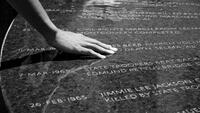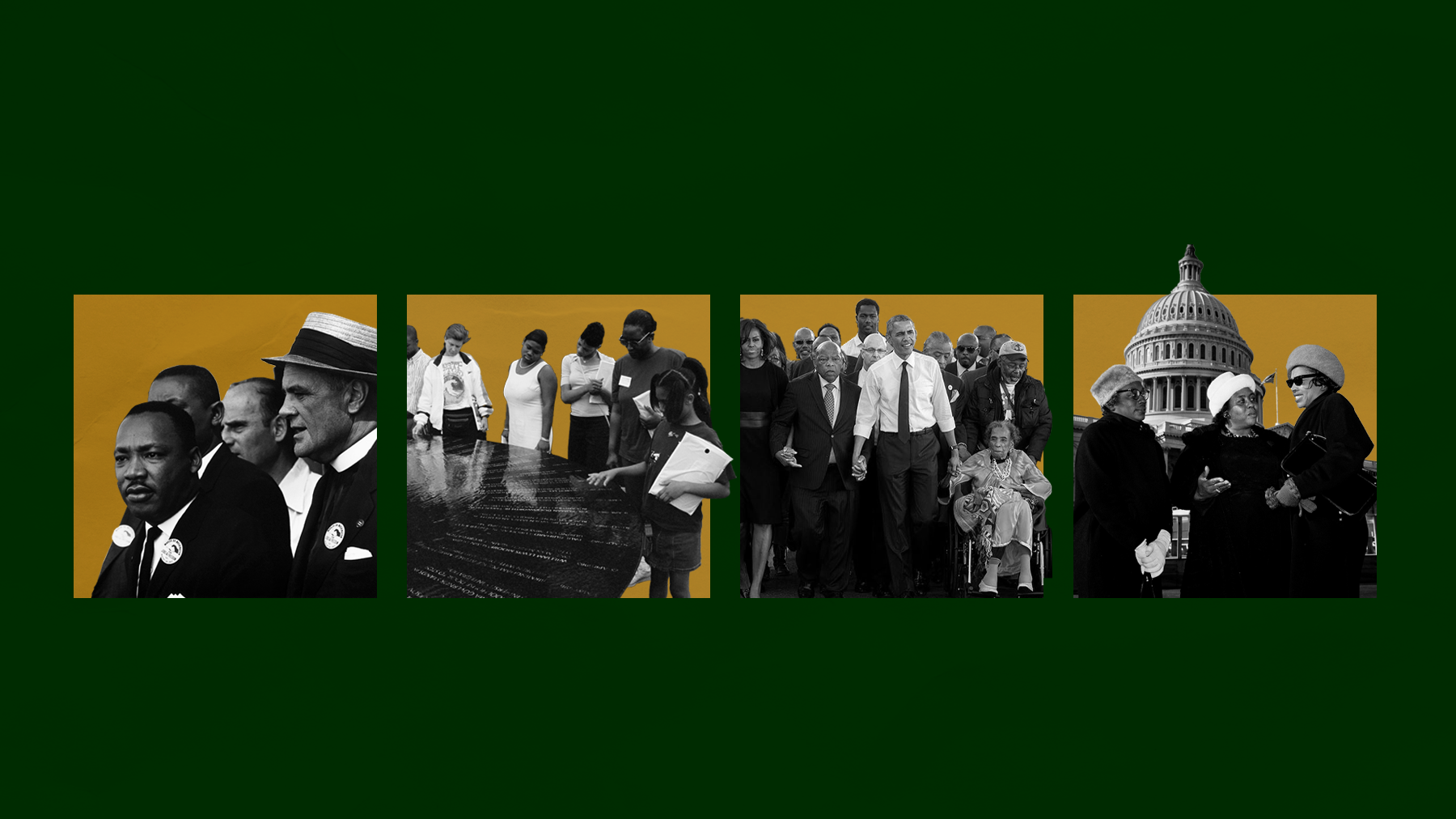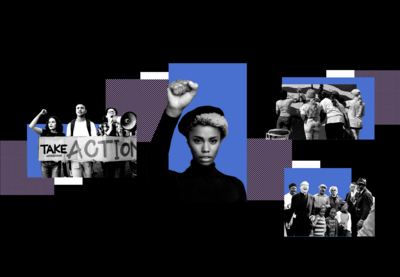“Awake youth of the land and accept the noble challenge of salvaging the strong ship of civilization by the anchors of right, justice and love…”
—Ella Baker, from Valedictorian speech, 1927
Youth activism has been a powerful force for change and progress. When young people step up and speak out, they bring fresh perspectives, boundless energy, and unshakeable determination in the march toward justice. In the Civil Rights Movement, the courage of young students — leading sit-ins, marching with Dr. Marin Luther King Jr. and demanding justice — helped spark transformative change. Their steadfast belief in justice propelled the movement forward.
Today, your participation in movements for justice and equity continues the legacy of those who came before you.
As we commemorate the 60th anniversary of the 1965 Selma to Montgomery march, it is your time to step forward, just as the young people did then, and say, “Change starts here.” Your voice, your energy and your activism are essential in shaping today’s movements for justice.
The 60th anniversary of the 1965 Selma to Montgomery march marks a pivotal moment in the Civil Rights Movement. In a powerful demonstration of collective action, ordinary people, united in a common goal, embarked on a 54-mile march from Selma to Alabama’s state capital, Montgomery. Along the way, white supremacists brutally attacked the activists, spurring public outrage. The disturbing and violent images of that day shifted public opinion in favor of the movement’s cause and led to the passing of the Voting Rights Act of 1965.
This anniversary serves not only as a time to reflect on the triumph and bravery of the marchers, but also as a call to action. The Voting Rights Act of 1965 remains far from fully realized. Black communities still face racist gerrymandering, high rates of disenfranchisement, voter ID laws, and restricted access to the polls. The legacy of this march is one of collective action and unwavering resilience, and just as the marchers of 1965 overcame seemingly insurmountable challenges, we too must rise to meet the challenges of today.
Participants will engage in critical thinking and reflection, group discussions and concrete practice that will allow them to:
- Study nonviolent action as a technique in leading change.
- Recognize their own power in the urgency of now.
- Study the March from Selma to Montgomery as a case study to understanding the steps to direct action organizing and movement building.
- Strengthen unity and solidarity of young people across the South that signals a commitment to nonviolent action against injustices in their own communities.
- Receive guidance on action planning.
- Participate in a nonviolent direct-action demonstration.
Facilitator Preparation
- Identify a space for participants to engage in discussion and with the learning materials. Secure materials needed for the day of action.
- Identify a public space (some places will require a permit to assemble) to demonstrate the group's action in solidarity with other participants across the South.
Time: 2-2.5 hours
- 60 minutes learning and preparation
- 90 minutes for the direct-action demonstration
Materials & Resources
- Introduction to Action Planning (LFJ learning journey) and Action Planning Guide (PDF or print copy)
- Learning From the Civil Rights Movement series, which includes resources on Hostile Opposition to the Movement and Selma: From the Bridge to the Ballot
- Albert Einstein Institution — On Nonviolent Action
- Albert Einstein Institution — 198 Methods of Nonviolent Action
- Video: The Strength of Ordinary People: A Conversation With Jo Ann Bland
- Photos from the Civil Rights Movement from 1955-65 and other movements such as the 1965-79 Grape Strike and Boycott, 2020 Black Lives Matter and the 2017 Women’s Marches
- You Are Here (PDF for black cutout) or You Are Here (PDF for red cutout) and Footprint (PDF for cutout)
- Card stock or poster paper, large craft sticks or small wooden stakes, markers, glue or tape and scissors
1. What is Nonviolent Direct Action? How Can Nonviolent Direct Action Effect Change in Society?
In this Day of Action session, participants will learn from civil rights history and make connections to today, understand the power potential of nonviolent direct action organizing, and engage in community demonstrations of action that intensify agency and strengthen local capacity and power.
The technique of nonviolent struggle matches forces against an opponent group. This is the case when a broad population, known as the grievance group, is harmed or negatively affected by the policy or actions of the opponent group. The technique of nonviolent struggle or action allows for the grievance group to shift the power dynamics between them and the opponent group to achieve its goal of stopping the harm. There are 198 methods of nonviolent action identified by Gene Sharp in The Role of Power in Nonviolent Struggle.
The 1965 March from Selma to Montgomery demonstrated marches as a method of action (listed as the 38th method of the 198 methods of nonviolent action) that resulted in the passage of the 1965 Voting Rights Act. The Day of Action sessions not only commemorate the 60th anniversary of the March from Selma to Montgomery, but also serve as a reckoning of today, when identity, values, beliefs, diversity, history and freedoms are being challenged and denied. These actions will symbolize the solidarity of young people standing for justice and the recognition of their agency to do so.
Preview of Learning: Participants will discuss the role they have in leading change and review how change was led historically through nonviolent action. They will reflect on changes they hope to see and their personal capacities to lead in that change. Participants will create signs to show their commitment to change and join in a group rally to demonstrate the solidarity of the group. The group will continue to learn and build for actions in the future.

The Strength of Ordinary People: A Conversation With Jo Ann Bland
As a child, Jo Ann Bland participated in the Selma, Alabama, march that became known as Bloody Sunday. In this video interview excerpt, Bland inspires us to civic action.
2. Learning and Reflection: The Power of Nonviolence in Your Community
What Is Nonviolent Direct Action?
- Create a mind-map or web chart and brainstorm around the term nonviolent action. Use these questions as a guide: What is nonviolent action? When have you heard the term nonviolent action used? What do you know about it? What makes it nonviolent? What makes it actionable? (Participants can create individual webs or group webs on large chart paper). Engage in discussion about the term nonviolent action using the guiding questions above.
- Watch the short video interview The Strength of Ordinary People: A Conversation With Jo Ann Bland.
- Share and review the characteristics of nonviolent direct action and 198 methods. (Optional: print for groups.) Look at images from the Civil Rights Movements and newer movements such as the Black Lives Matter and Women’s rights and LGBTQ+ equality. Identify the characteristics of nonviolent action demonstrated in those movement images.
- Discuss how nonviolent direct action has been used to change situations in which communities have been harmed. Reference the Civil Rights Movement (and the video or photos from the movement) and how the movement was guided by the philosophy of nonviolence. Why was nonviolent action met with violence? Why was it important to maintain the philosophy of nonviolence in the Civil Rights Movement? The March from Selma to Montgomery was met with much violence. How did nonviolence succeed?

Introduction to Action Planning Day of Action Toolkit
This toolkit provide steps for a day of action session and learning journey, with a PDF Action Planning Guide that can be printed, for a structure to introduce individual or collective action planning for change.
3. Action: What Are Some Things You Believe Should Be Changed in Your Community and Beyond? What Is Your Role in Creating that Change?
Processions, symbolic public acts and formal statements are demonstrations of nonviolent action. The Day of Action is designed to include all three techniques. This Day of Action session will involve the opportunity for participants to engage in a procession (#38: marches), a symbolic public act (#27: new signs and messages) and formal statements (#1: rally and public speeches).
Facilitator(s): Prepare copies of the “footprint” cutout. Share that the significance of the cutout is to show our personal commitments to change we want to see that will better our lives and the lives of others. Distribute materials (Footprint cutouts, “You are here” cutouts, markers, scissors, other supplies as needed) and guide the process. Explain the significance of the cutout is to mark participants’ place in history and what the struggle for freedom looks like for them today. Work with participants to complete the following reflection and action steps.
Reflect on your identity. How do you see yourself? What is your story? What parts of your identity drive you toward change and action? Why?
- Brainstorm and write down as many terms that reflect your identity as possible. List descriptors of your identity on the footprints, demonstrating that we all have a place in leading change and shaping justice. Use scissors to cut the “footprints” shape out.
Reflect on today and the urgency of now. What are the harms you are witnessing today? How are those harms a threat to you, your identity, your values?
- Reflect on changes discussed in your action planning session. Use a marker to list them around the cutout.
- Cut out the “you are here” shape. Attach the “footprint” cutout to the “you are here” cutout (tape, glue). Glue or tape the cutouts to poster or card stock paper (strong enough to make sign). (Optional: Tape or glue a large craft stick to your sign.)
- Think about how many others you can get to commit to the changes you listed. Write the number on the sign.
Take Action.
- Join a procession to the public space. Chanting, cheering, singing and other forms of solidarity are encouraged.
- Openly present your signs by either holding them during the public rally for change or displaying them in a public space.
- Participate in a public rally. Share a message at the public rally.
4. Next Steps: Taking Action in My Life.
- Reflect how the group procession, public rally and sign displays are a form of nonviolent direct action. Take pictures of the group activities. Share pictures on social media and across media outlets to encourage others to join in future actions.
- Discuss how the group feels about taking action in the future. Continue to work through the Action Planning Guide. Remember, the steps in the guide can be used for individual or collective planning. This is a tool meant to help your thinking, so be sure to use it how it works best for you.
- Stay connected to Learning for Justice for future Calls to Action.

Hostile Opposition to the Civil Rights Movement and Selma: From the Bridge to the Ballot
Learn more about the hostile opposition to the Civil Rights Movement and the 1965 Selma to Montgomery march, including historical context and timeline of events, with these two learning journeys.

Learning from the Civil Rights Movement
The Civil Rights Movement is a story of people who believed they could bring about change. The resources in this series can help us learn from our history and examine today’s justice issues to answer the questions: “How can I make a difference?” “How can we make a difference together?”

